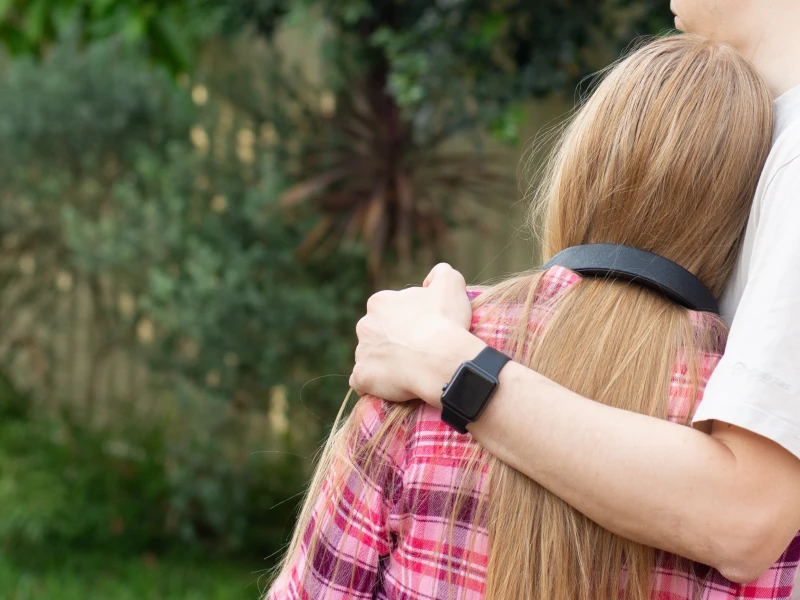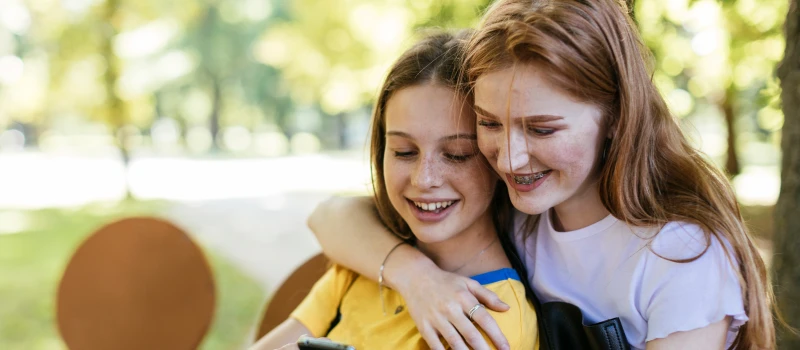
Table of Contents
What Are the Four Attachment Styles?

Written By: Dr. Rasna Kaur Neelam

Clinically Reviewed By: Dr. Don Gasparini
December 13, 2022
8 min.
Attachment styles describe behaviors that individuals express in relationships. In this article we discuss the history of attachment style theory as well as review healthy and unhealthy attachment styles.
Learn more about our Clinical Review Process
Table of Contents
Your attachment style is the type of behavior you showcase in and around relationships. Attachment styles can be associated with friendships, romantic relationships, relationships between parents and their children, and more.
For example, someone with an “anxious-avoidant” attachment style might be very independent, seen as a “lone wolf,” and have a hard time connecting with others. This behavior may impact all aspects of that individual’s life – from friendships to romantic relationships or even relationships in work settings.
Knowing what your attachment style is can help you better understand why you feel certain emotions regarding relationships. Keep in mind that it is always possible to move from an unhealthy or insecure attachment style to a more secure one through the help of therapy or other types of support. It’s also entirely possible to exhibit more than one attachment style at a time or throughout the course of your life.
What is attachment theory?
Attachment theory is a psychological theory and area of research that attempts to understand the emotional attachments that form between humans. Developed in the 1950s by a British psychiatrist and psychoanalyst named John Bowlby, attachment theory started as a way to study the early relationships babies form with their parents.
Bowly believed that babies and children first learn how to form emotional attachments and relationships when they are frightened, worried, or vulnerable by seeking comfort with their primary caregiver. Of note, in Bowlby’s studies, the primary caregiver is almost exclusively the mother, but we know now this is not always the case.
To test his beliefs, Bowlby conducted studies, observed animals in the wild, and analyzed evolutionary theory.
Some of his main theories and observational findings from studies include the following:
- Babies are born with a need to form attachments as a method of survival. This primary bond is usually with a guardian or parent.
- A child should receive continuous care from at least one guardian for the first two years of life, a critical period in attachment development.
- Disruptions of maternal-infant bonding due to maternal absence or other reasons can result in long-term cognitive, social, and emotional difficulties for the child. This famous theory of Bowlby’s is called “Bowlby’s maternal deprivation hypothesis.”
- Short-term separation of a child from their primary guardian often results in distress.
- The child’s attachment-style with their primary caregiver teaches the child about the world and may inform relationships with others throughout their life.
Two decades later, Mary Ainsworth, an American-Canadian psychologist introduced the idea of many of the attachment styles we commonly think of today. These styles were created out of a well-known research procedure she developed in the 1970s called the “strange situation.”
In the procedure, infants and toddlers approximately ages 1-2 are put into a variety of back-to-back situations in a room. Each situation lasts for about 3 minutes. The situations include the following:
- Mother, baby, and experimenter are all in the room for <1 min
- Experimenter leaves and mother and baby are in the room for 3 minutes
- A stranger joins the mother and infant in the room for 3 minutes
- Mother leaves the baby and stranger alone for 3 minutes
- Mother returns and the stranger leaves for 3 minutes
- Mother leaves and the infant is left completely alone for 3 minutes
- The stranger returns for 3 minutes
- Mother returns and the stranger leaves
Based on how the infant reacts to certain situations, especially during the reunion with the mother,, Ainsworth classified the infant’s attachment as secure, resistant, or avoidant, which are attachment styles we will discuss more below.
Since Dr. Bowlby’s initial studies and the addition of Dr. Ainsworth’s research, the study of attachment theory has expanded greatly.
The four attachment styles explained
In this section, we will briefly describe each of the four main attachment styles. Keep in mind that these are theoretical concepts developed by scientists and not strict, mutually exclusive categories. The following information was originally described in an article published in 1988 introducing this four-category model of attachment styles titled, “Attachment Styles Among Young Adults: A Test of a Four-Category Model.” The first three styles below are considered “insecure” attachment styles, whereas the last style is considered a “secure” attachment style.
The basis of the four attachment styles rests on how individuals view themselves and how individuals view others. What does this mean? First, an individual’s view of themself is split into two categories – worthy of love and support or not worthy of love and support. Next, an individual’s image of others is also split into two – other people are trustworthy and available or other people are unreliable and rejecting. Based on the individual’s answer to the two questions above, a table of four attachment styles is created. These are the four attachment styles below.

Anxious-preoccupied attachment style
Individuals within the anxious-preoccupied attachment style have a negative view of themselves and have a hard time believing they are worthy of love. At the same time, they have a positive view of others. Due to this combination, this attachment style describes individuals who strive for self-acceptance by gaining acceptance of valued others. These individuals want to create or partake in relationships but constantly worry about them. This can include friendships, romantic interactions, and more.
In the article mentioned above, researchers studied students in an introductory psychology course and asked them to fill out questionnaires. These questionnaires asked questions about demographics, friendships, self-esteem, self-acceptance, sociability, relationships, and interpersonal problems.
From information gathered in the study, individuals with an anxious-preoccupied attachment style were more likely to:
- Be emotionally expressive
- Cry frequently and cry in the presence of others frequently
- Care for others
- Rely heavily on others
- Use others as security
- Reveal private information about themselves to others
- Be involved in romantic relationships
- Have less of a balance of control in friendships
- Be less self-confident
Dismissive-avoidant attachment style
Individuals with the dismissive-avoidant attachment style are almost the complete opposite of individuals with the anxious-preoccupied attachment styles. As a reminder, individuals with the anxious attachment style above have a negative view of themself but a positive view of others.
In contrast, individuals with a dismissive-avoidant attachment style have a positive view of themselves, believing they are worthy of love, attention, and other positive qualities. However, they hold a negative view of others and believe others are not trustworthy or reliable. Individuals with this attachment style can therefore be dismissive of relationships. They may protect themselves against disappointment by maintaining their sense of independence so that they are not vulnerable to disappointment.
From information gathered in the study, individuals with an anxious-preoccupied attachment style were more likely to:
- Have very high self-confidence
- Not show emotions often
- Cry less
- Be more in control than their social partners in friendships and romantic relationships
- Be less warm and less caregiving
- Have less intimate relationships and less of a capacity to rely on others as compared to those with secure or preoccupied attachment styles

Fearful-avoidant attachment style
The fearful-avoidant attachment style combines some elements of the two described above. Individuals with this attachment style have a negative opinion of themselves but also have negative impressions of others. These individuals believe they are unlovable or not worthy of love. They also have the expectation that others will behave in untrustworthy or rejecting ways. This leads to behavior that is fearful of intimacy and these individuals avoid social interactions.
From information gathered in the study, individuals with an anxious-preoccupied attachment style were more likely to:
- Avoid disclosing information about themselves to others
- Be less intimate
- Have fewer romantic relationships
- Be less reliant on others
- Be less self-confident
- Assume a subordinate, or less important, role in close relationships
Do you need more support with
your mental health?
Charlie Health can help.
Secure attachment style
Individuals with a secure attachment style have high opinions of both themselves and others. They have a high sense of worthiness and also have an expectation that others will generally be accepting and responsive. They are comfortable with intimacy and also with autonomy.
From information gathered in the study, individuals with a secure attachment style were more likely to:
- Have close, intimate friendships
- Be warm and self-confident
- Have a good balance of control in friendships
- Have a high level of involvement in romantic relationships
Do your parents produce your attachment style?
Scientists are not fully sure how parenting plays a role in attachment styles.
The development of your attachment style is thought to occur early in the first year or two of life. In general, research shows that caregivers who are more consistently available, responsive, and sensitive to the infant and child’s needs are more likely to produce a child with a secure attachment style. Care does not merely involve providing the basic necessities of life but also providing emotional support and affection in addition to food and shelter.
On the other hand, caregivers who are unavailable, unresponsive, abusive, or inconsistent with their availability or responsiveness may produce children who develop one of the three insecure attachment styles detailed above, or some combination therein.
In early life, parenting, the environment an infant is raised in, and to a lesser extent genetics all may play a role. As a child develops and matures, relationships later in life with friendships, romantic partners, and more can all influence attachment styles. Whether attachment styles stay consistent, or stay the same, all the way through adulthood is a topic of debate. Further research into this area is ongoing.
Knowing your attachment style matters
Thinking and learning more about your attachment style can help you understand yourself and your relationships better.
For example, if you fall under the preoccupied or fearful attachment styles, you may have the belief that you are unlovable or are not deserving of love, respect, and meaningful relationships. If you fall under the dismissing attachment style, you may feel that others will not be there for you or will let you down.
These beliefs may have held true in your lifetime–maybe you have been made to feel unlovable or unworthy in friendships or romantic partnerships. Perhaps you have allowed yourself to be vulnerable in relationships in the past with negative consequences. Furthermore, research shows that certain insecure attachment styles can even have associations with mental health disorders in the future, such as anxiety. For all of these reasons and more, Charlie Health is here to help.
At Charlie Health, virtual intensive outpatient programming (IOP) for clients ages 11-30 can help you understand and reframe negative and harmful viewpoints so that you can have a more secure relationship with yourself and with others.
We’re available 24/7 to get you started on your healing journey.





